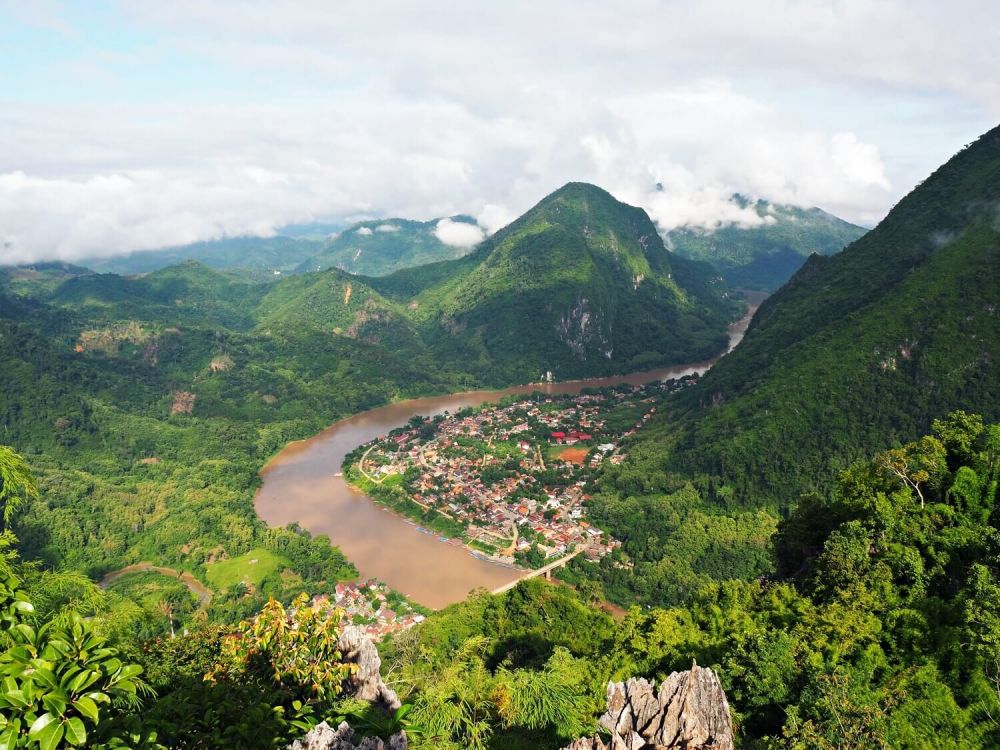

High above the quaint town of Nong Khiaw, which nestles along the banks of the serene Nam Ou River, lies a breathtaking vantage point simply known as the Nong Khiaw Viewpoint. This stunning natural attraction has become one of Laos' most celebrated tourism gems, not only for its beauty but also for the cultural and adventurous journey it offers.
Nong Khiaw has long been a waypoint for intrepid explorers trekking through Southeast Asia. Its history in tourism, however, has only started to bloom in the 21st century. With the improvement of infrastructure, embracing eco-tourism, and the international exposure of neighboring tourist hotspots like Luang Prabang, Nong Khiaw began to shine as a pristine escape offering both solace and adventure.
Traditionally, the primary allure of Nong Kihaw's tourism was its unchanged, rustic way of life. Visitors could immerse themselves in a traditional Laotian experience. However, with the increasing popularity of trekking and nature activities worldwide, Nong Khiaw's tourism began to pivot towards a stronger focus on its natural landscapes - with the Viewpoint becoming a symbol of the town's appeal.
The view from atop the Nong Khiaw Viewpoint, also known locally as Phadeng Peak, is the most renowned draw. The ascent to the viewpoint is a challenging trek, typically taking around two to three hours. Trekkers will navigate a steep and, at times, demanding path. However, the journey's end rewards with panoramic views of the stunning limestone karst scenery, the undulating green of the forest canopy, and the twisting ribbon of the Nam Ou River below.
As tourism interests have evolved, so has the experience in Nong Khiaw. Adventure tourism has risen sharply in popularity. Activities such as mountain biking, caving, rock climbing, and kayaking are now all on offer, attracting a diverse set of visitors, from solo backpackers to adventure-seeking families.
Eco-tourism is also increasingly significant. Many tours and accommodations in Nong Kihaw now prioritize sustainability and cultural sensitivity. This shift has been essential not only in preserving the natural beauty that draws visitors but also in ensuring the community benefits from and supports the growing tourism industry.
The latest trend in Nong Khiaw's tourism scene is a growing emphasis on slow travel - encouraging visitors to stay longer, explore deeper, and reduce their environmental footprint. Such an approach nurtures a more meaningful connection with the environment and local people. Through slow travel, the Nong Khiaw Viewpoint becomes not just a picturesque background for photographers but also a symbolic journey through the heart of Laos' mountainous northern landscapes, encouraging responsible and immersive tourism.
Despite Nong Khiaw's increasing popularity, the area remains relatively untouched compared to more commercialized destinations. This balance between accessibility and preservation has made Nong Khiaw, and particularly the ascent to its Viewpoint, a true treasure for those seeking both the thrill of adventure and the ever-increasing need for authenticity and ecological mindfulness in their travels.
For those looking to uncover the natural wonders and embrace the still-preserved culture of Laos, Nong Khiaw and its Viewpoint stand as a beacon—a testament to the quiet but profound power of sustainable tourism development.